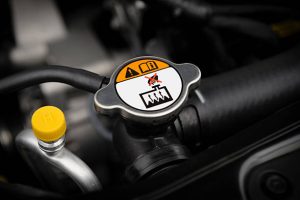The use of coolant is the same in electric vehicles with thermal management systems as it is in regular passenger cars. The drive motor and batteries can be heated or cooled using liquid coolant. Regularly adding coolant and replacing it in accordance with the vehicle’s maintenance schedule may be necessary. Make sure you’re using the appropriate coolant and pay close attention to the owner’s manual (or equivalent). Despite not being put through the same extremes as an internal combustion engine, coolant can nevertheless degrade and become polluted.
What Sort Of Fluids Is Needed For An Electric Vehicle?
You won’t have to worry about oil changes during your EV maintenance because electric cars have entirely separate drivetrains. The combustion engine of a typical gas car needs oil to wax the moving parts. The pistons, valves, and other moving parts of an engine must pass one another smoothly while it travels at high speeds. In this method, the close-tolerance interactions necessitate an oil change for the engine. This constant metal-on-metal contact causes atomic metal flakes to build up in the oil, which necessitates changing the oil not just to keep the gasoline-powered engine operating smoothly but also for the safety and durability of the engine.
Even though EVs don’t need oil, these three fluids still need to be checked frequently.
1. Coolant – The thermoregulation system in electric cars relies on coolant to prevent the batteries from overheating. During maintenance, coolant must be added and replaced.
2. Depending on how frequently you use it, you should top off windshield washing fluid as necessary.
Do Electric Vehicles Require Oil And Antifreeze?
No, is the easy reply. Vehicles that are totally powered by electricity do not require oil changes. This is because they lack the internal combustion engine found in automobiles powered by gasoline. An electric vehicle like the Chevy Bolt 2022 is propelled by electric motors and a battery.
Electric vehicles move by using an electric motor that is powered by a battery. Since there are no engine pistons, valves, or other moving elements that need lubrication, electric vehicles don’t frequently need their oil changed. You won’t have to worry about maintaining a regular oil change schedule because electric cars have whole different drivetrains than conventional vehicles.
Is It Real That Liquid Cooling Is Used in Electric Cars?
The first plug-in hybrid car to hit the market was the Chevy Volt (or Bolt). Even though its dominion is officially over, it will have a lasting impact on history in a number of ways:
Without the Chevy Volt, the public might not have had access to electric vehicles.
One of the first commercially available electric vehicles featuring liquid-cooled batteries was the Chevy Volt. The batteries in many of the other vehicles, including the Nissan Leaf, did not live as long as those in the Nissan Leaf because they were air-cooled. As a result, the Chevy Volt was the first car to provide a battery with a warranty for 100,000 miles.
Through 144 metal plates, coolant passes between the Volt’s 288 cells (or fins). These plates have a 1 mm thickness, which is incredibly thin. A heating coil heats the entire system when the battery gets too chilly.
GM claims that the battery is dependable in a temperature range of -13 to 122 degrees Fahrenheit (-25 to 50oC). Some extremes can be handled by their batteries. Despite no longer being manufactured, the Chevy Volt was crucial to the advancement of electric automobiles.

Use of fluids in electric vehicles
A leader in the field, Total offers products and services that are cutting-edge, effective, and environmentally conscious for use in industrial, trucking, maritime, and automotive applications.
Lubricating an electric car is very different from lubricating an internal combustion engine. For the former to reduce engine friction, both oil and transmission fluid are needed. These things stand alone. Particularly, engine oils must be replaced on a frequent basis because of the way combustion gases cause them to deteriorate over time.
Electric vehicles feature motor speeds of up to 15,000 rotations per minute and significant power flow variations. Three fluids, including an oil specifically designed for the electric motor and gear reducer, may be required by the automaker to boost cooling. Soon, batteries and power electronics will be able to use thermal management fluids for quick charging and powerful acceleration, improving range and maintaining safety.

Is it accurate to say that electric cars need water and oil?
Electric vehicles don’t utilize engine oil. They typically use oil in their reduction gears, though, and this oil may need to be changed over the course of a vehicle’s lifetime. Unlike with a typical petrol or diesel automobile, you won’t have to worry about any of them with an EV: Engine oil changes.
Is Preheating Electric Vehicles Necessary?
Although “warming up” is not necessary for electric vehicles, many experts advise that you do it before accelerating. Like conventional automobiles, electric car motors work best when they are warm.
